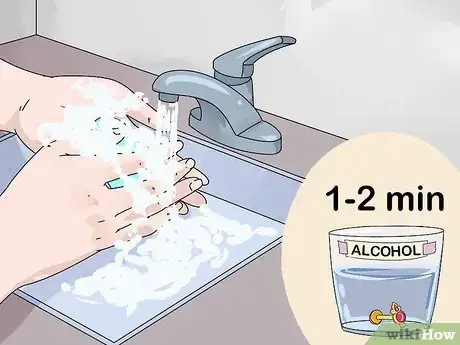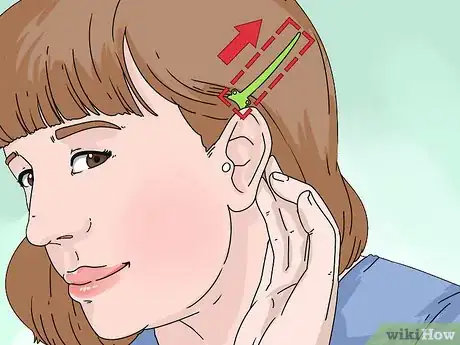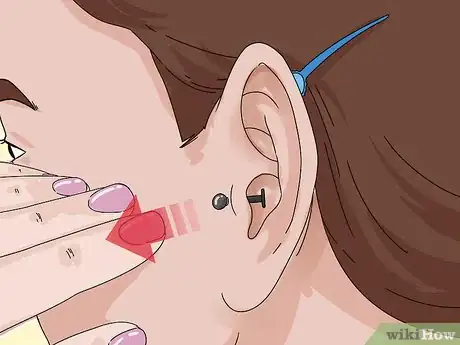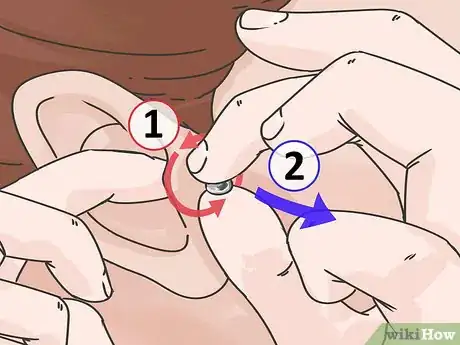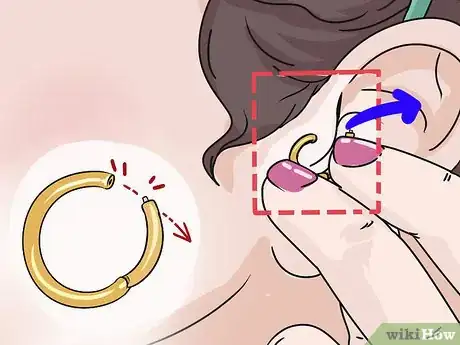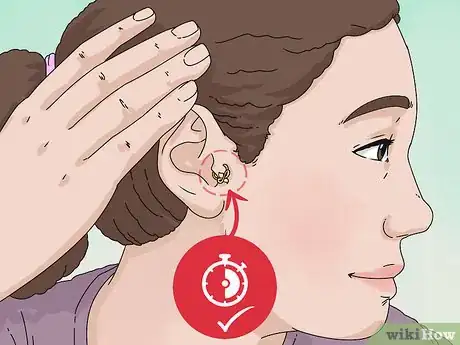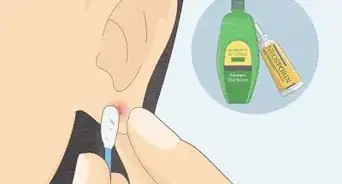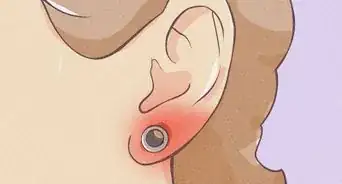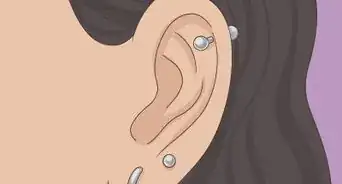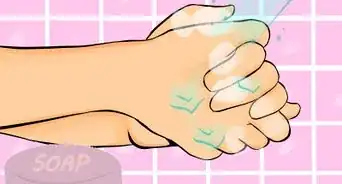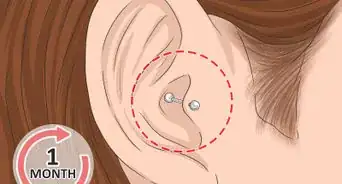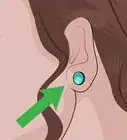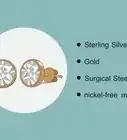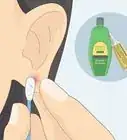This article was medically reviewed by Luba Lee, FNP-BC, MS. Luba Lee, FNP-BC is a Board-Certified Family Nurse Practitioner (FNP) and educator in Tennessee with over a decade of clinical experience. Luba has certifications in Pediatric Advanced Life Support (PALS), Emergency Medicine, Advanced Cardiac Life Support (ACLS), Team Building, and Critical Care Nursing. She received her Master of Science in Nursing (MSN) from the University of Tennessee in 2006.
There are 9 references cited in this article, which can be found at the bottom of the page.
This article has been viewed 202,831 times.
The tragus piercing is a sophisticated piercing done on the flap of skin just in front of your inner ear. Because of its location, taking jewelry out can be a little more difficult than with other piercings. It's still doable, though! Start by getting yourself ready, then pull the jewelry out based on what type you have. If you're too scared, don't be afraid to ask for professional help.
Steps
Getting Ready to Remove the Piercing
-
1Start with clean hands and jewelry. This step is particularly important if you are changing your piercing for the first time. Wash your hands thoroughly with soap and water, making sure to scrub them in warm water for at least 20 seconds. Dry with a clean towel.[1]
- If you're changing your tragus jewelry out for a new piece, make sure to sterilize the new jewelry. Wash it in soap and water, and then dunk it in rubbing alcohol for a minute or two.[2]
-
2Pull your hair back. Your hair will get in the way as you try to change your jewelry. It's best to pin it back out of the way to make the process easier on yourself. Of course, if you have short hair, it won't be a problem for you.[3]Advertisement
-
3Expose the jewelry. When you take your jewelry out of the tragus, it helps to pull the skin away so you can get to the piercing. Place your finger directly in front of the tragus, and gently pull the skin forward. That should show more of the jewelry, giving you room to work.[4]
-
4Clean the area with alcohol to keep it clean. Wipe the piercing and the area around it with rubbing alcohol to keep the area sterile. This will prevent having germs or bacteria left on your skin from causing an infection while you handle the piercing.
Removing Different Types of Jewelry
-
1Unscrew an earring with a ball backing. Unscrew the ball from the back of the stud. Be careful not to drop the ball, as it can be difficult to find. After you unscrew it, you can pull the stud out of your ear.[5]
-
2Pull out a stud with a flat back from the back of your ear. Press your finger up against the back of the ear, so that the stud is pushed forward. Unscrew the ball in the front. Once it's unscrewed, push it gently towards the back, and pull the flat back stud out from the other side.[6]
- If you're having trouble, use rubber gloves or even tweezers to hold onto the post in the back.[7]
-
3Unsnap a segment ring. A segment ring is a ring with a piece that opens up and then snaps back into place. To take it out, find the notch where it unsnaps and open up the hoop. Pull it out through the back of your ear.[8]
- Be careful when unsnapping the ring, as the skin is sensitive in this area.
-
4Pull out a front stud from the front. With this type of earring, a small bar fits inside the stud that goes through your ear. Push the bar forward from the back. Pull the front stud out of the tube. Lightly push the stud backwards, and pull the stud out of the back of your ear.[9]
Taking Extra Precautions
-
1Wait until the piercing is completely healed. You should never change any piercing out if it's not healed. Drainage and crustiness indicate it hasn't healed. In addition, it will still be painful if it hasn't healed. Don't rush the process, as it could lead to an infected piercing.[10]
- Healing can take several months with the tragus.
- Infected piercings, which may have redness, swelling, and extreme drainage (thick pus), should be checked out by doctor. Don't take out your piercing if you suspect an infection.
-
2Put your new jewelry in quickly. This piercing is particularly susceptible to healing over. To keep it from closing, do not leave it open too long. A few minutes is fine, but some people have problems with even just a few hours.[11]
-
3Ask a professional piercer. Professional piercers know exactly how to change out jewelry, and they can do it much easier than you can. If you're worried about changing it out yourself, go to your local piercer and ask if they'll do it for you.[12]
Warnings
- Don't change your jewelry over a sink, as you can lose pieces down the drain.⧼thumbs_response⧽
References
- ↑ http://www.thedebrief.co.uk/style/fashion/tragus-piercing-everything-you-want-to-know-20150543278
- ↑ https://www.youtube.com/watch?v=3dGMzXWxtpw&feature=youtu.be&t=77
- ↑ https://www.youtube.com/watch?v=IH2S-XRGKUM&feature=youtu.be&t=13
- ↑ https://www.youtube.com/watch?v=uCjPakO1CnQ&feature=youtu.be&t=195
- ↑ https://www.youtube.com/watch?v=YUowAWIz5dU&feature=youtu.be&t=185
- ↑ https://www.youtube.com/watch?v=YUowAWIz5dU&feature=youtu.be&t=273
- ↑ https://www.youtube.com/watch?v=uCjPakO1CnQ&feature=youtu.be&t=42
- ↑ https://www.youtube.com/watch?v=uCjPakO1CnQ&feature=youtu.be&t=150
- ↑ https://www.youtube.com/watch?v=aZ5jq1Uexu0&feature=youtu.be&t=90
